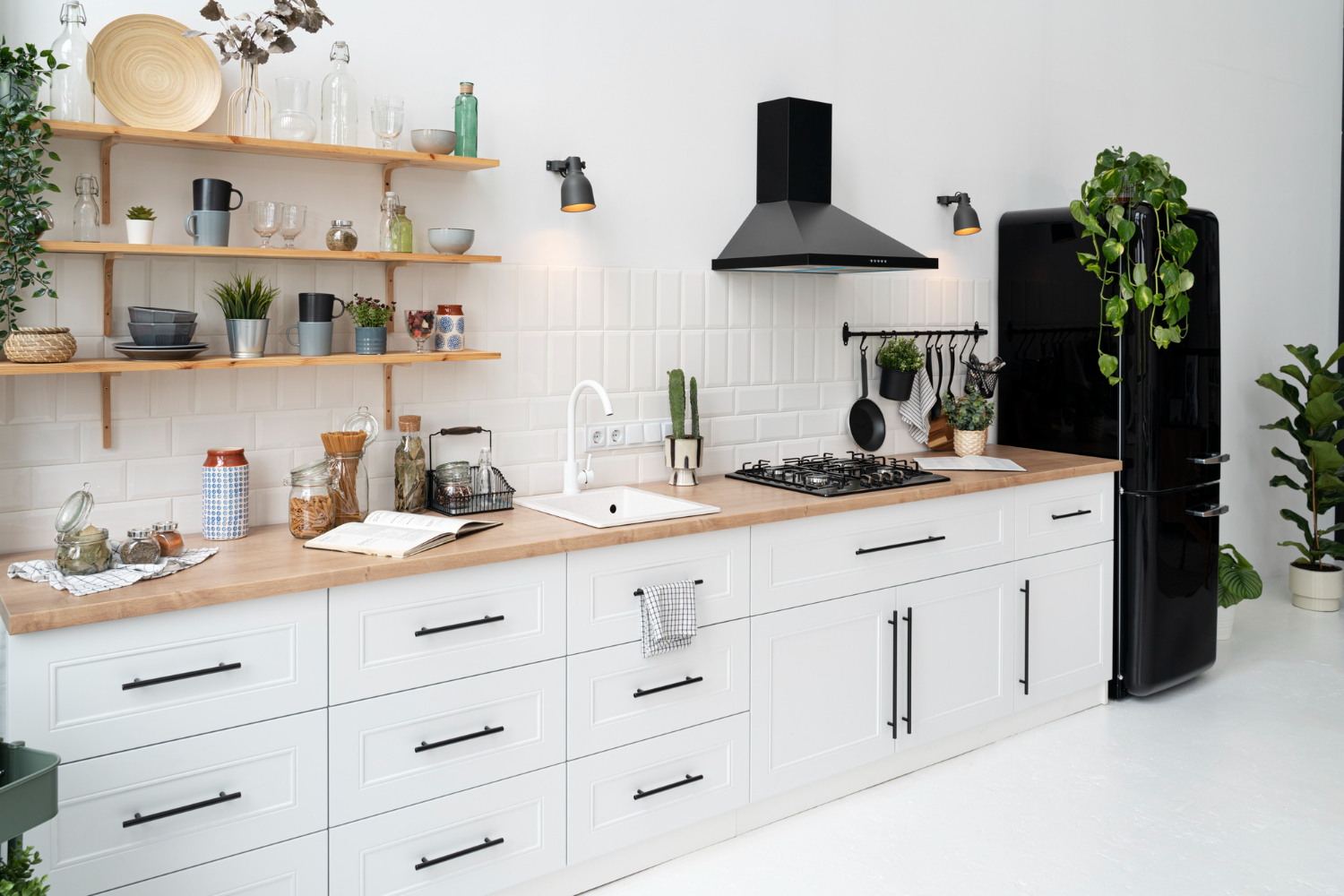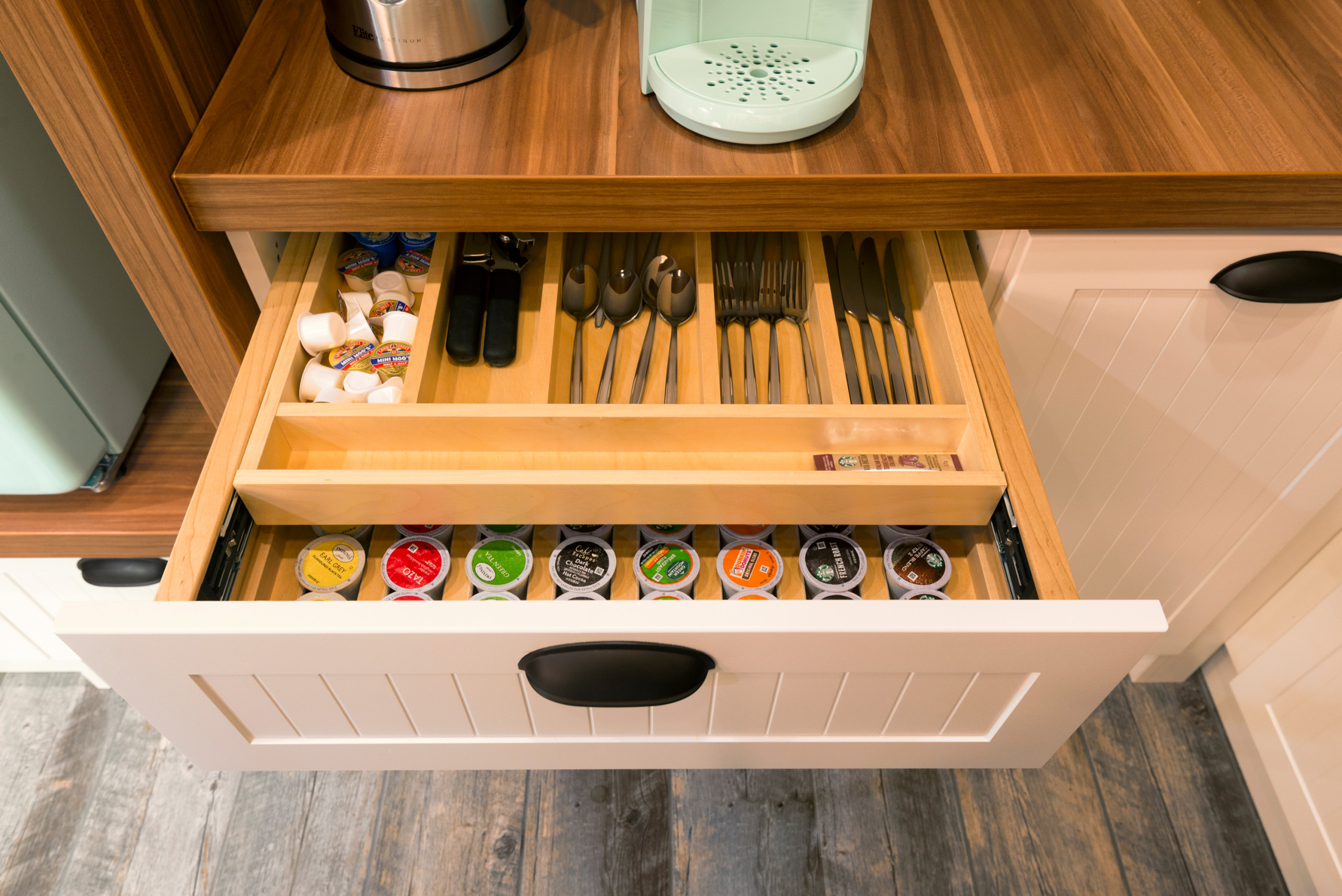Choosing the right kitchen cabinets when remodeling is one of the most important decisions you’ll make—it impacts your kitchen’s functionality, style, and overall value. With countless options in material, design, and configuration, it’s easy to feel overwhelmed. This step-by-step guide will help you choose the perfect kitchen cabinets that match your needs, taste, and budget.
1. Determine Your Budget
Before diving into design choices, know how much you’re willing to spend.

Average cabinet cost ranges:
- Stock cabinets: $60–$200 per linear foot
- RTA (Ready-to-Assemble): $80–$250 per linear foot
- Semi-custom: $150–$500 per linear foot
- Custom cabinets: $500+ per linear foot
Pro tip: Cabinets can eat up 30–50% of your total kitchen remodel budget, so plan accordingly.
Read More: How do you buy kitchen cabinets on a budget?
2. Measure and Plan Your Layout
Take detailed measurements of your kitchen space:
- Wall-to-wall dimensions
- Ceiling height
- Window and door placements
- Appliance positions
Use kitchen planning tools like IKEA Kitchen Planner, Home Depot Designer, or apps like SketchUp to mock up the layout.
Consider:
- Do you want an island or a peninsula?
- Are you keeping the existing plumbing and appliance locations?
Proper planning ensures you maximize storage and workflow efficiency.
Read More: How to do DIY kitchen cabinetry and countertops cheaply?
3. Choose Your Cabinet Style
Cabinet door style sets the tone for your kitchen design.
Popular cabinet styles:
StyleDescriptionBest For
Shaker Clean, square edges; timeless and versatile Most homes—modern to farmhouse
Slab Flat-panel, modern look Minimalist, contemporary kitchens
Beadboard Vertical lines, cottage feel Rustic or coastal designs
Raised Panel Traditional with decorative detailing Classic, formal kitchens
Glass-front Showcases dishes or decor Accent pieces, open feel
Tip: Combine closed cabinets with open shelving or glass doors for a balanced look.
Read More: How does interior remodeling enhance a home?
4. Choose Cabinet Materials Wisely
Materials affect both cost and durability.
Cabinet box materials:
- Plywood: Strong, moisture-resistant, long-lasting (best choice)
- MDF (Medium-Density Fiberboard): Smooth, paint-friendly, affordable
- Particle Board: Budget-friendly but less durable
Read More: What’s a Great Way to Improve a Room for Less Than $100?
Cabinet door materials:
- Solid wood: Durable and classic but more expensive
- MDF: Great for painted finishes, resists warping
- Laminate/Thermofoil: Low-maintenance, budget-friendly
Recommendation: Opt for plywood boxes with MDF or solid wood doors for the best balance.
Read More: How to Make My Living Room More Cozy: The Ultimate Guide to a Warm and Inviting Space
5. Pick the Right Finish and Color
Your cabinet finish will influence the entire kitchen vibe.
Popular finishes:
- Painted: Modern and clean (white, navy, sage green)
- Stained: Shows wood grain; good for traditional or rustic looks
- Laminate: Smooth, colorful, and affordable
- Matte or glossy: Depends on your lighting and style preference
Trendy colors (2025):
- Warm whites
- Deep greens
- Matte black
- Natural wood tones
Read More: How Can Home Interior Design Transform Your Living Space?
6. Decide on Storage Features and Organization
Think beyond looks—functionality is key in everyday use.

Storage add-ons to consider:
- Pull-out spice racks or trash bins
- Deep drawers for pots and pans
- Lazy Susans in corner cabinets
- Vertical tray dividers
- Soft-close hinges and drawer slides
- The built-in utensil or cutlery organizers
These options may increase costs but add major long-term convenience.
Read More: How to Remodel My Garage Into a Living Space: A Complete Homeowner’s Guide
7. Choose Cabinet Configuration
Design your cabinets to match your lifestyle and habits.
Basic cabinet types:
TypeUse Case
Base cabinets Sit on the floor, support countertops
Wall cabinets Mounted above counters for storage
Tall cabinets For pantries or brooms
Open shelving Light, airy feel for decorative items
Layout tips:
- Use drawers over doors for base cabinets—they’re more accessible
- Consider removing some uppers and using shelves for an open look
Read More: What Should I Consider When Planning a Renovation? A Complete Guide for Homeowners
8. Decide: Stock, Semi-Custom, or Custom?
Your budget and timeline play a role here.
TypeProsCons
Stock Cheap, fast, easy to find Limited sizes & styles
RTA Inexpensive, DIY-friendly Requires assembly
Semi-custom Flexible features & sizes Mid-range price
Custom Fully tailored to space/style Most expensive & longest lead
Tip: If you want a custom look on a budget, go semi-custom or RTA with personalized finishes.
Read More: The Easiest Way to Redesign a Small Living Room: Smart Tips for a Stylish Makeover
9. Evaluate the Cabinet Construction Quality
Look for these signs of well-built cabinets:
- Dovetail joints (instead of staples or glue)
- Full-extension drawer slides
- Soft-close hinges
- Solid or plywood box construction
- Adjustable shelving
- Durable, moisture-resistant finishes
Even affordable cabinets can be well-made if you shop carefully.
Read More: How Long Does It Take to Renovate a Living Room? A Complete Timeline and What to Expect
10. Maintenance and Durability
Make sure the finish and materials suit your lifestyle.
- Glossy finishes are easy to clean but show fingerprints.
- Matte finishes hide smudges better but may be harder to wipe.
- Solid wood is durable but can expand with moisture—good ventilation is key.
If you cook frequently, prioritize easy-to-clean finishes and hardware.
Read More: 15 Easy DIY Projects for a New Apartment: Budget-Friendly Ideas to Make It Yours
Quick Checklist: How to Choose Kitchen Cabinets
Set a realistic budget
Measure and design your layout
Choose a cabinet style that fits your home
Pick durable materials (plywood box, MDF, or wood doors)
Select a color and finish
Add functional storage upgrades
Match cabinet type to your budget (stock, RTA, semi-custom)
Check for construction quality
Choose hardware that complements your style
Consider maintenance and cleaning
Read More: How to Extend a Living Space for Less Cost: Smart Budget-Friendly Ideas
Final Thoughts
Choosing kitchen cabinets is about balancing form, function, and budget. By understanding your options and planning carefully, you can create a kitchen that’s beautiful, durable, and a joy to use every day.
